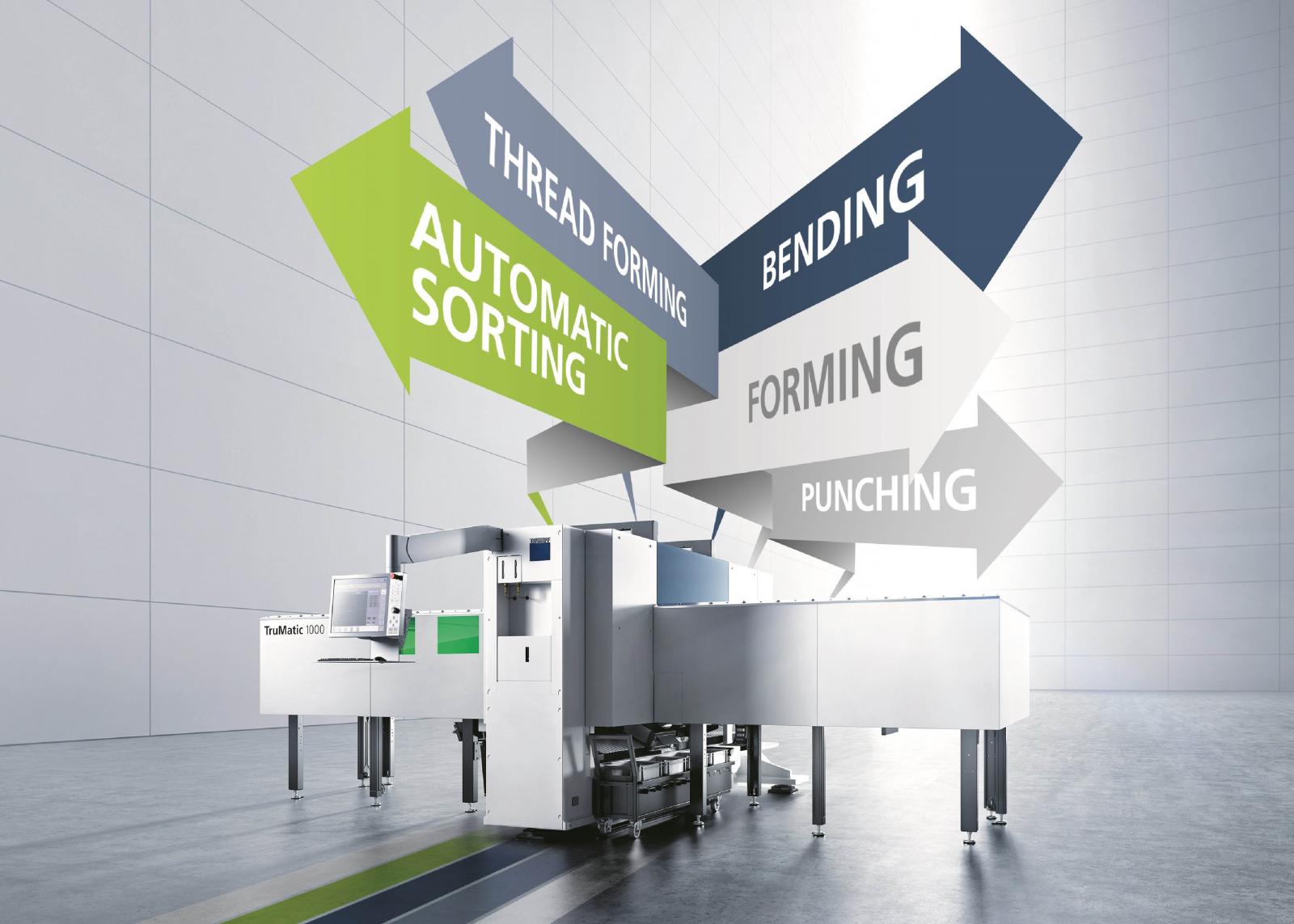
The UK’s first TRUMPF TruMatic 1000 fiber laser-punch, which has been installed at Luton-based Islebest Ltd, is helping the bespoke metalwork specialist achieve cycle-time reductions of 35% against stand-alone laser and punching machines.
The investment, which has also saved on floor space, is now helping to attract new prospects for this progressive manufacturing business.
Established for 26 years, prides itself on the timely delivery of high-quality, cost-competitive parts. From straightforward laser-cut components, through to folded, welded and assembled parts, Islebest supplies to sectors that include ventilation, lighting, drainage, shop-fitting, office furniture and agriculture, to list but a few.
The company has 48 employees (plus agency workers during peak periods) who help achieve an annual turnover of circa £3.7 million.
Despite achieving year-on-year growth of around 5%, Islebest recently sought to upgrade its laser cutting and punching capability at the company’s 32,000 sq ft facility.
“We needed to upgrade our oldest TRUMPF laser machine after 20 years of service,” explains Managing Director Paul Burchmore. “Although it was still cutting well, we needed more output to keep up with orders. We were also finding that our two punching machines were not required as much as the lasers and, as we were getting tight on floor space, decided to sell the punching machines and our oldest laser and replace it with the TruMatic 1000 fiber.”
The new TruMatic 1000 fiber has been designed as a cost-effective starting point for punch-laser processing. Essentially, it is a laser profiler that also punches holes, bends flanges and forms threads, and is the world‘s most compact machine of its type. Importantly, the TruMatic 1000 fiber is available as a complete solution or, if preferred, can be upgraded to a punch-laser machine gradually.
“At first we just looked at a new 2D laser machine, but that didn’t bring anything extra to our capacity,” says Mr Burchmore. “The TruMatic fiber offers so much more, with its marking, folding and tapping capabilities. Furthermore, it is a lot quicker on thinner materials and uses far less electricity.”
Installed at the end of April 2017, the machine has been set to work producing parts at the thinner end of Islebest’s range, typically around 1.5mm. Some of the components are threaded, thus eliminating secondary operations. The company is also evaluating a new product that features a rolled depression, which will suit the TruMatic 1000 fiber perfectly.
A further benefit for Islebest is that the company can now add reflective materials such as copper and brass to its portfolio (which it previously had to turn away), complementing the existing mild steel, stainless steel, galvanised steel and aluminium. Component tolerances are typically 0.25mm, and sometimes as tight as 0.1mm, while batch sizes range from 10 to 10,000. Extra shift patterns are deployed during peak periods, during which Islebest will often run 24 hours a day, six days a week, and some Sundays.
“Thanks to our investment, we are able to run parts quicker and to a better standard of finish and specification,” states Mr Burchmore. “I estimate we are saving 35% on cycle times, as well as eliminating many secondary operations. Just the fact that the machine will laser-cut intricate shapes and punch lots of holes, as in the case of our perforated shelving, is such an advantage time-wise.”
“Investment in the latest manufacturing technologies is paramount to a business such as ours,” says Mr Burchmore. “Technology moves on so quickly, so we try to continually invest to remain competitive and ensure repeat business. The TruMatic 1000 fiber is the latest example of this philosophy.”
The machine adds to the existing TRUMPF TruLaser machines on site. Indeed, the space created by the sale of the two punching machines has also allowed the company to invest in two new TRUMPF press brakes.
Read more news from Engineering Capacity